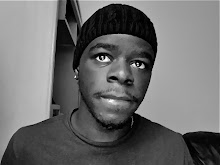This film and media production class was very informative and much more diverse than I thought it would be. I feel that it focused a little too much on the media aspect than the film production aspect. This might be because of my bias as a film major but I still feel that I didn't increase my knowledge of film production during the span of the course. I definitely preferred the labs over the lecture, not only because the labs were more interactive and hands-on, but also because the lecture had a tendency to be redundant sometimes. Some parts of the course that I specifically enjoyed included the Photoshop exercise, the typography lecture, the film lighting video documentary, and the camera-shots exercise in the lab. I really enjoyed the Photoshop exercise because it refreshed my memory on the Photoshop tools I had forgotten. As a former graphic design major, I was very aware of software like CS3 and its components. Since it had been a while that I have worked on Photoshop, the lab exercise was very exciting and innovative. I thoroughly enjoyed the typography lecture because I had always been fascinated by the history behind certain fonts. I had read a story about the origin of Serifs a long time time ago, so the typography lecture was quite enjoyable for me. My favorite part of the lecture was the story behind the Helvetica font. The film lighting documentary, even though it spanned two lectures, was easily my favorite lecture of the entire course. Again, as a film major, I was excited about seeing the history and tales behind the lighting techniques of some of my favorite classic films. I really enjoyed the camera-shot exercise in the lab because it gave me an opportunity to creatively capture an image in my unique fashion. Even though we are restricted to low-angle, high-angle...etc, I was able to pick my choice of image and capture it in the required manner.
The one 'take away' that I'll remember at the end of this course is the dedication that is required in order to capture images in a specific manner.
Wednesday, May 19, 2010
Saturday, May 15, 2010
Design I Like
One of my favorite design is the DVD cover for the movie "The Dark Knight". One of the most successful movies of 2008, "The Dark Knight" captures the story of the famous comic that involves Batman, The Joker, Harvey Two-Face and other Marvel cartoon characters. The DVD was released in December 2008 and the cover design is a very well-done work of art. The cover has only one character on it, The Batman. He is shown at a low-angle view, he has got a flaming high-rise building behind him and most of the picture is fogged with smoke. At the top of the cover are the names of the most significant characters in a horizontal line. Their first names are in a smaller font and are on top of their last names which are much visible as they are in capitals and in larger fonts. Below the characters' names, in a smaller font and tighter lettering is the movie director, Christopher Nolan's name. Under his name, in the background, is the Batman logo. The signal is designed with bright lights around it, giving it a fierce and bold look. In the foreground of that logo is the title of the film "The Dark Knight" in bold letters with a lot of spacing in the lettering. In the background of the high-rise buildings is a very fierce cloud with dark spots that indicate a storm brewing. This cover reflects a lot of the major themes in the movie. It depicts The Batman alone on the cover, which speaks a lot to the underlying plot of the movie.
"What I See"
For this exercise, I chose to analyze Alfred Hitchcock's "Psycho." One of the greatest and pioneering movies in history, "Psycho" is a masterpiece that embodies all the key concepts of a classic feature film. One of the most powerful technique used in the movie is the camera-audience (viewer) relationship that Alfred Hitchcock builds throughout the movie. He clearly understood and viewed the camera as the eyes of the viewer; we only get to see what he wants us to see. This plays a huge role in the plot of the movie because Norman Bates, the main character, engages in a lot of private agendas that needed to be shielded from the viewer. A particular sequence that exemplifies how the shot reflects a major theme in the movie is the scene where Norman Bates and Marion Crane have "dinner" in his back office. The camera starts the sequence with both characters in a medium shot. It switches to a medium of each character separately as they converse. The most significant camera work of this sequence is when Norman started talking about his mother. He is framed in a low-angle shot that shows his stuffed birds eerily hovering over his head as if his mother was there watching the conversation quietly. The famous "shower scene" was also done with amazing technical detail.>Looking at the storyboard of the sequence, Hitchcock paid a lot of detail to the way the stabbing of Marion is portrayed. Also, the close-up shot of her eye after the brutal murder plays into the viewpoint theme of the movie.
Subscribe to:
Comments (Atom)
